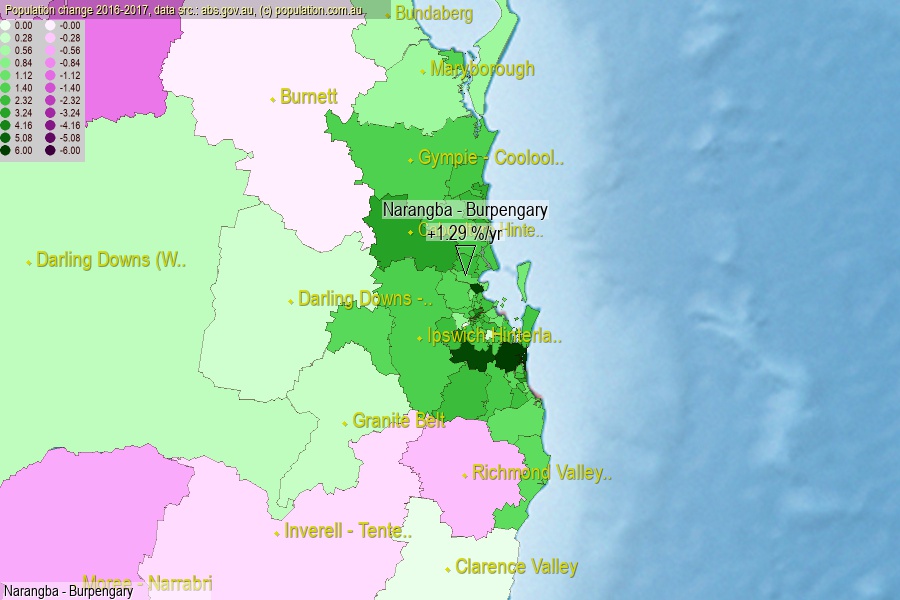 population.com.au
population.com.auLast official estimated population of Narangba - Burpengary (as Statistical Area Level 3) was 65 557 people (on 2017-06-30)[2]. This was 0.26% of total Australian population and 1.314% of QLD population. Area of Narangba - Burpengary is 172.00 km², in this year population density was 381.15 p/km² . If population growth rate would be same as in period 2016-2017 (+1.29%/yr), Narangba - Burpengary population in 2025 would be 72 637. [0]



Click to enlarge. Narangba - Burpengary is located in the center of the images.
Population [people], population density [p./km²] and population change [%/year] [2]
View borders » (new window) [4]
[1991-1992] +8.66 %/Y
[1992-1993] +10.51 %/Y
[1993-1994] +8.34 %/Y
[1994-1995] +6.98 %/Y
[1995-1996] +4.66 %/Y
[1996-1997] +4.13 %/Y
[1997-1998] +2.93 %/Y
[1998-1999] +2.21 %/Y
[1999-2000] +2.16 %/Y
[2000-2001] +1.83 %/Y
[2001-2002] +3.35 %/Y
[2002-2003] +4.39 %/Y
[2003-2004] +6.31 %/Y
[2004-2005] +5.44 %/Y
[2005-2006] +3.13 %/Y
[2006-2007] +3.76 %/Y
[2007-2008] +3.44 %/Y
[2008-2009] +2.46 %/Y
[2009-2010] +2.03 %/Y
[2010-2011] +0.95 %/Y
[2011-2012] +1.64 %/Y
[2012-2013] +1.44 %/Y
[2013-2014] +1.22 %/Y
[2014-2015] +1.33 %/Y
[2015-2016] +1.67 %/Y
[2016-2017] +1.29 %/Y
[0] Calculated with linear interpolation from officially estimated population
[1] Read more about SA3 and Australian Statistical Geography Standard (ASGS) on abs.gov.au
[2] Population data from Australian Bureau of Statistics (Population and density: 2017; change: 2016-2017)
[3] Digital Boundaries: Australian Statistical Geography Standard (ASGS) 2016.
[4] Border coordinates are simplifyed using Ramer-Douglas-Peucker algorithm.